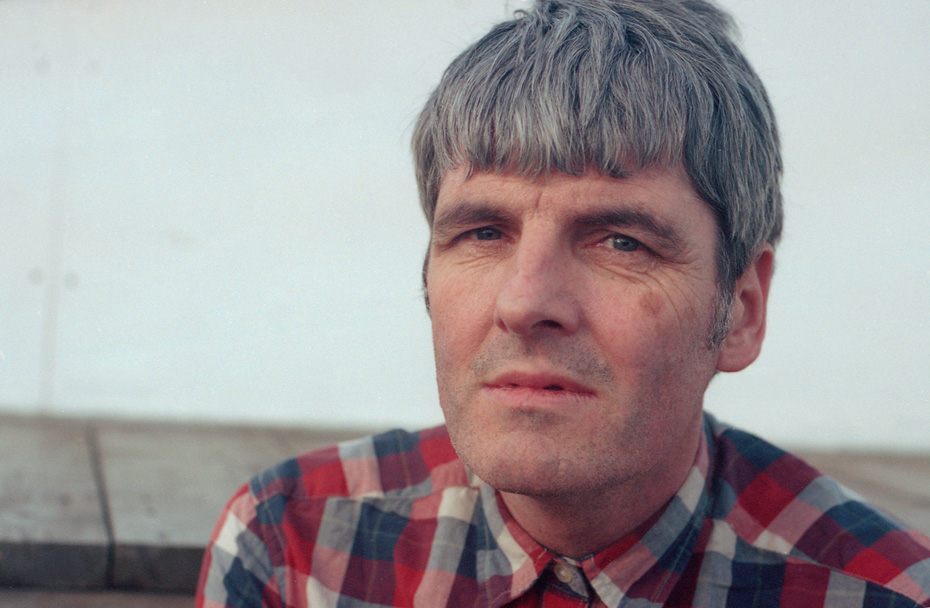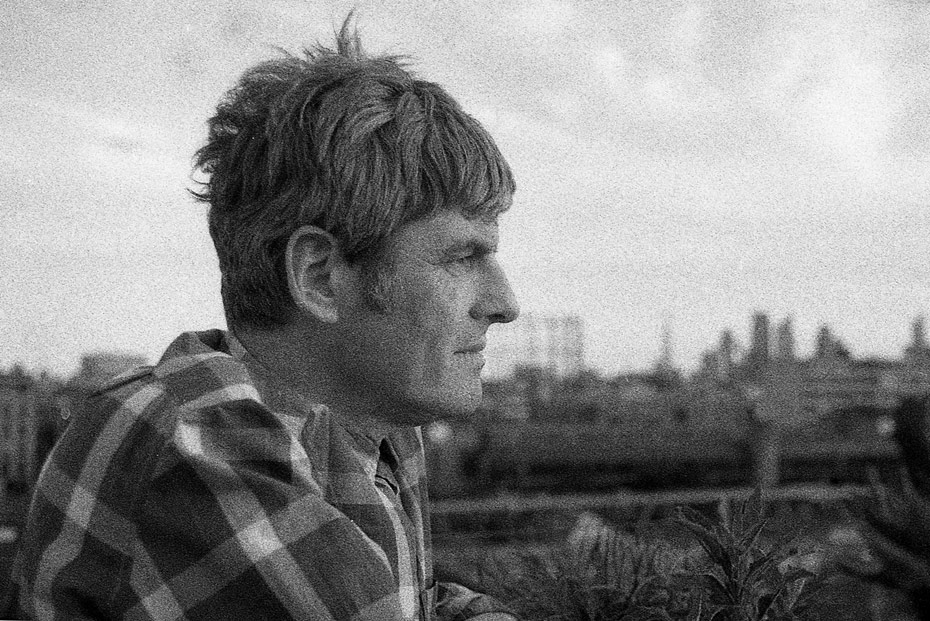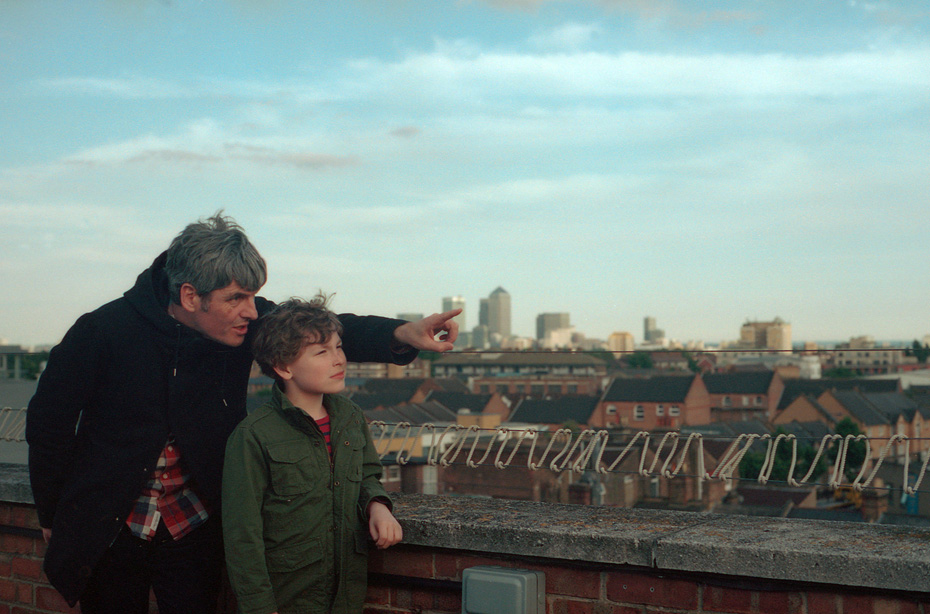As his latest collaboration with pop band Saint Etienne shows at the London Festival of Architecture, filmmaker Paul Kelly explains why documentaries always have an element of fiction
Photography Liz Seabrook
As the credits roll on How We Used to Live, the latest film project from Paul Kelly and pop band Saint Etienne (plus writer Travis Elborough), the thought that lingers most is how little the bustle of day-to-day life in London has changed for ordinary people. Essentially a feature-length montage of colour footage from the BFI archive, spanning 1950 to 1980, there’s plenty the modern London dweller will recognise: heaving platforms at Oxford Circus, equally heaving Soho dancefloors, the unnatural pace of the hurried commuter…
“Nothing really changes,” says Kelly, when we meet at a café in Hackney, a short bus ride from his home in Clerkenwell. His young son, Donovan, who would rather be anywhere else but here, accompanies him. “There’s a great book called ‘Soft City’ by Jonathan Raban, written in 1974,” he continues, “that talks about how people live in cities and how cities work. It could’ve been written yesterday. People’s concerns – house prices, the wealth divide – are the same. That’s one of the things we tried to show with the film, we weren’t saying ‘Hey, wasn’t life great back then’. We’re saying it was exactly the same.”

How We Used to Live is the fourth film Kelly has made about London with Bob Stanley and Pete Wiggs of Saint Etienne – the latter composed the original score. Their first, Finisterre (2003), looked at the city’s secret corners and pockets of creativity, and its eternal allure to outsiders, whilst 2005’s What Have You Done Today, Mervyn Day? provided a guided tour of the deprived Lower Lea Valley as the bulldozers moved in, in preparation for London 2012. This Is Tomorrow (2007) focused on the refurbishment of the Royal Festival Hall on the South Bank.
“The first one was about London in general, the second was about a part of London and the third was about a building in London. We didn’t really need to do anymore. What was the next one going to be about, a brick?” he says laughing. “Then myself and Bob spent a night watching Terence Davies’ Of Time and the City. We watched it four times and decided we loved it – not that we wanted to make a film like that, it’s very personal. We tried to think of London archive films and couldn’t think of something similar.”
“The legacy of the welfare state was the 1960s and The Beatles. The legacy of Thatcher is Mumford & Sons and a bunch of gap-year Tories”
Narrated by the syrupy tones of Ian McShane, How We Used to Live makes you want to metaphorically throw your arms around London and smother it with kisses. It’s part feature film, part documentary, a glorious, Technicolor homage to this great city, a visual shaming tool to sit alongside the old “If you’re tired of London…” adage.
“Documentaries are as much fiction as anything. Take Werner Herzog – his documentaries are more fictional than his features,” says Kelly. “The idea that a documentary is the facts and a feature film is fictional is completely false. As soon as there’s an editor involved there’s an angle. I don’t think that matters. When people say it isn’t strictly a documentary, so what? What is? Nothing’s real.”

Unsurprisingly, the research was somewhat time consuming: “Naively we thought half the job’s been done, it’s already been filmed. We spent about four years – very loosely – researching and only three or four months editing. Originally it was going to be 100 years of London on film, but we realised we had to narrow it down. Going through the BFI archive you start to realise a lot of libraries start going onto video around the early 80s – they stopped using film stock. The quality just drops away. I guess a lot of the cameramen were trained-up film guys who were suddenly given these video cameras they didn’t really know how to use. That gave us our cut-off point.”
That cut-off point is very neatly bookended by the end of World War Two and the establishment of the welfare state, and the beginning of Thatcherism. “It’s looking back at this golden era and saying ‘this was good for a reason”, ventures Kelly. “We had a very good socialist model in this country and it’s being dismantled for no good reason. The legacy of the welfare state was the 1960s and The Beatles and a bright open future for everyone. That was a great thing: it made people feel secure, that their lives were safe. The legacy of Thatcher is Mumford & Sons and a bunch of gap-year Tories.

“Originally we were hoping to have a much stronger polemic in the film, but we decided to step back. The way I like to do films is to invite people in and seduce them. Then you’re very subtlety pushing your point in a slightly subversive way – to provoke thought, rather than preach.”
Kelly has lived in London for over 30 years, having arrived in the capital as part of the band East Village, who were signed to Heavenly Recordings (through which he met Saint Etienne). As Much as How We Used to Live reinforces the unchanging, repetitious nature of city life, there’s no doubt London is a different city to the one Kelly found himself in, in the 80s. We’re both aware of the irony of having a conversation such as this in the gentrified surroundings of E8 in the epicentre of one of the capital’s most eye-wateringly expensive property bubbles.
“I don’t think it’s as easy to arrive in London now as it was for us in the 1980s. You could rent cheaply – you could get by. I don’t think that’s the case anymore. I don’t think that kind of access to London exists for young people. You have to have a career or rich parents.”
He’s still in love with the city however: “I feel as much a Londoner as I do an outsider. I’m still in awe of the place; it still inspires me.”
How we used to live and how we should live: Paul Kelly is still a dreamer at heart.
How We Used to Live is showing at King’s Place as part of the London Festival of Architecture. For further listings, click HERE. Thanks to Netil 360




